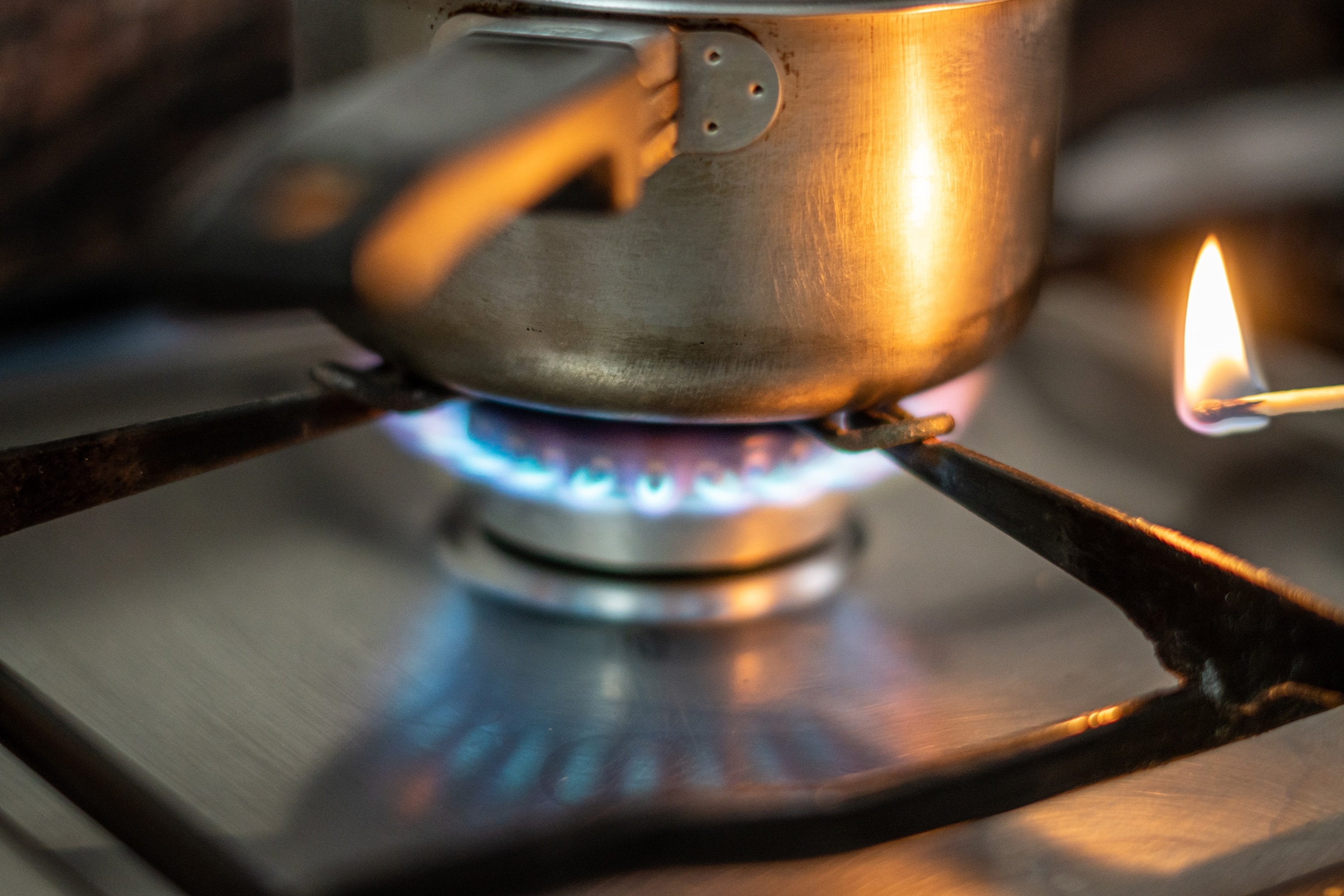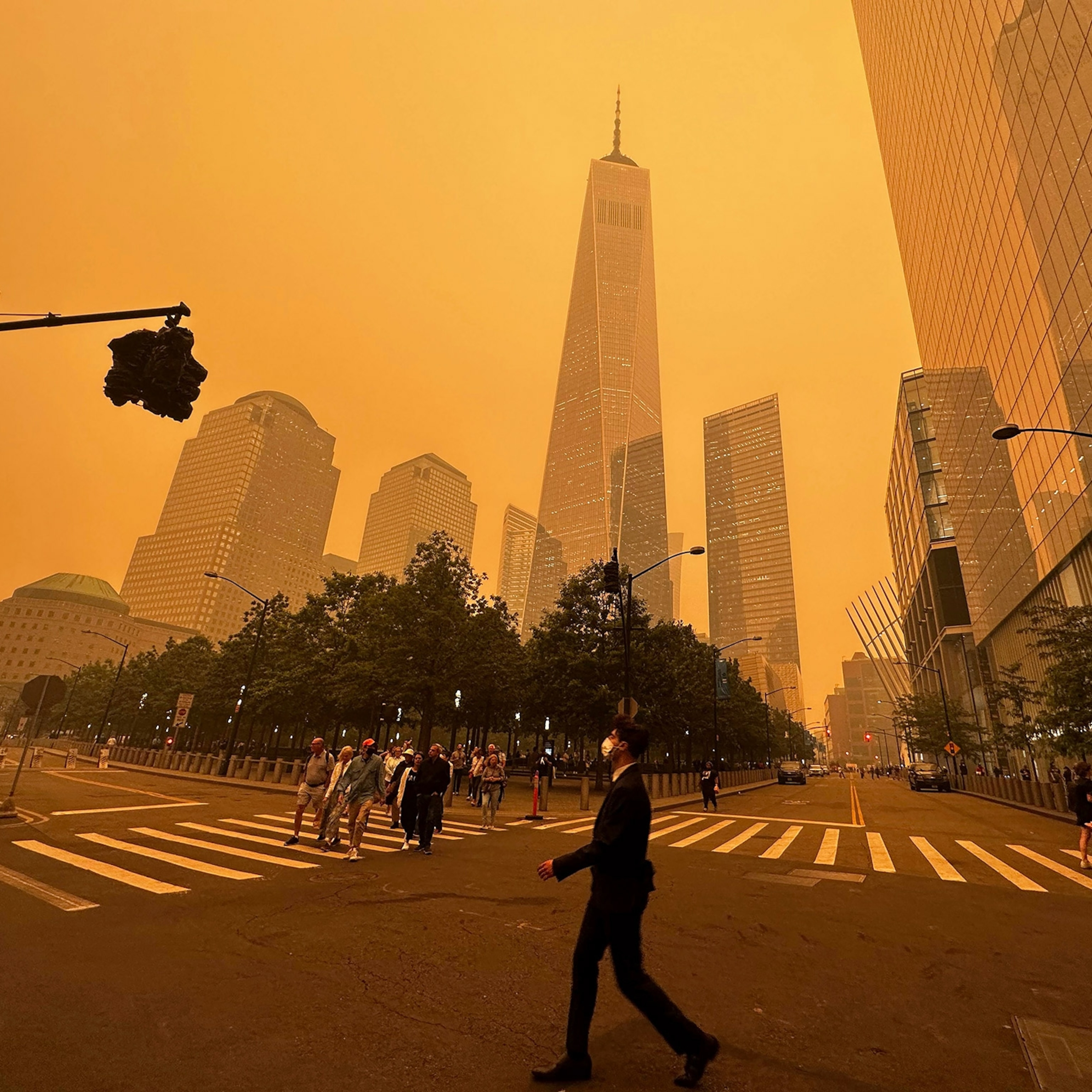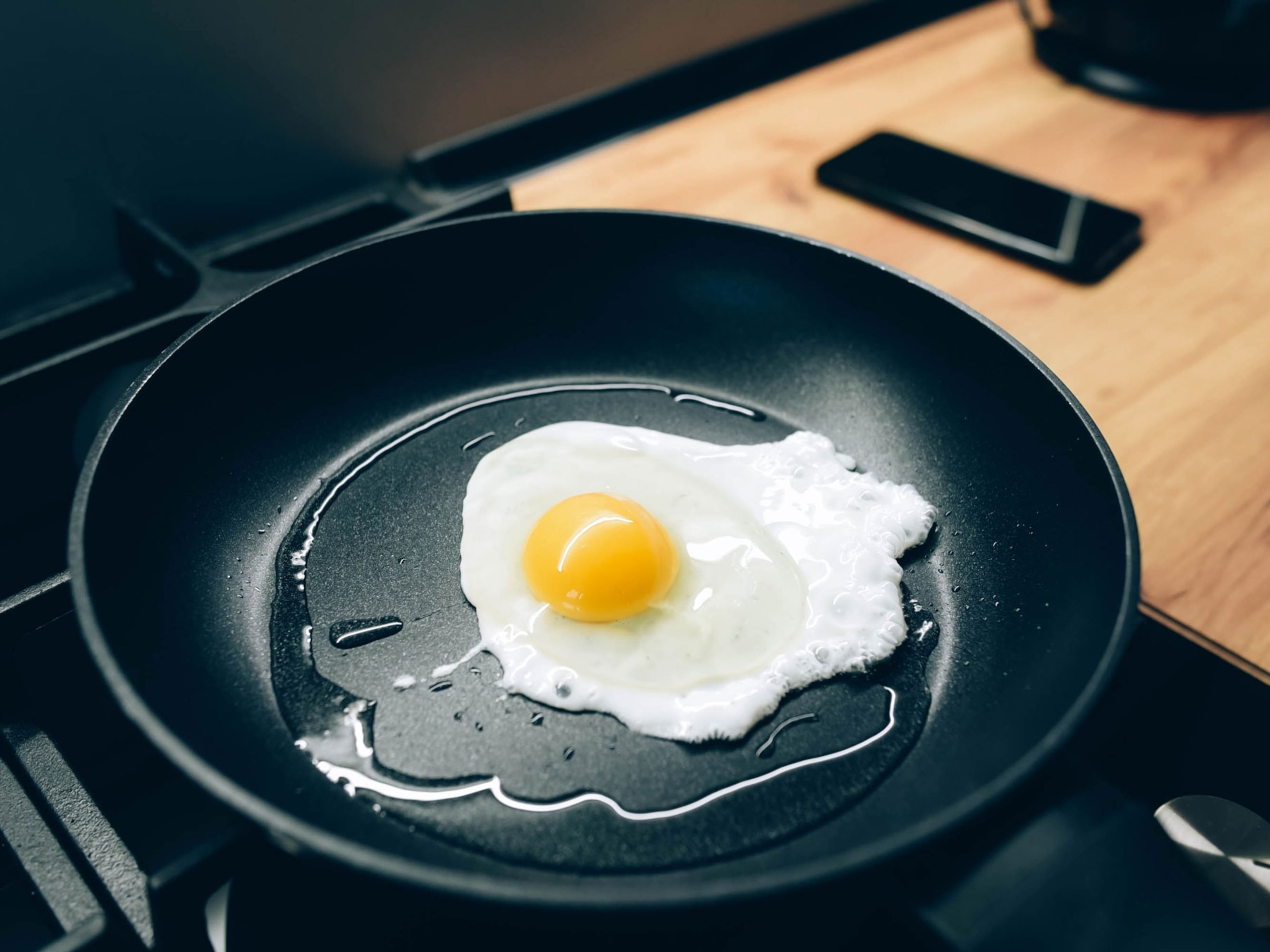
The scientific case against gas stoves
Health experts have known for decades that indoor air pollution hurts children's’ lungs. Now, there are good alternatives to gas stoves.
Chef Amanda Cohen always thought she’d use flames to cook. But when she opened her restaurant, Dirt Candy, in a teeny space in Manhattan, there wasn’t a gas line available—so she installed a fleet of induction cooktops instead.
They worked so well that “I’ll never go back,” she says. And she didn’t: when Dirt Candy moved to a bigger, gas-enabled location, she still opted for induction cooktops and electric ovens.
She’s not alone. Chef Eric Ripert put an induction stove in his own home, as did Alison Roman and Jon Kung, popular chefs on social media. They’re also a staple in professional kitchens, from the Cordon Bleu’s London’s training center to catering kitchens across the United States.
Chefs gravitate toward induction’s precision and ease of use, and because the cooktops, whose magnetic fields deliver heat to a pan’s bottom and nowhere else, keep their kitchens much cooler than blasting gas ranges. But there are another pressing reasons people—including a lot of non-chefs—are swapping: to protect both their health and the climate.
A body of research stretching back to the 1970s has pointed out respiratory hazards linked to indoor pollution from gas stoves. And because gas stovetops are powered by methane, a potent greenhouse gas, reducing its use in homes and commercial spaces would have a small but tangible impact on efforts to trim greenhouse gas emissions. The U.S. Consumer Product Safety Commission is currently exploring the risks of gas stove emissions in the 38 percent of American households who have one, and looking for ways to minimize indoor air pollution caused by their use.
“It’s a triple win,” says Brady Seals: climate, health, and ease of use. Seals led a recent study suggesting over 12 percent of the U.S.’s childhood asthma cases could be associated with breathing in gas stove pollution. About one in every 12 Americans has asthma, including five million American children, and its prevalence is increasing.
The gas-fired elephant in the room
Gas-fired stoves are essentially “little gas-fired power plants in your home,” says Drew Michanowicz, a scientist at PSE Healthy Energy, a public health-focused nonprofit based in California. And since we spend about 90 percent of our time indoors, we can expose ourselves heavily. When gas burns, it releases many lung irritants, like nitrogen dioxide gas (NO2), tiny particles, and much more.
By the 1970s, researchers worldwide had figured out that the inhaled gas penetrates deep into the lungs, driving inflammation. They began to find evidence that long-term exposure to NO2 increased the likelihood of children developing asthma, and that short-term exposure to high concentrations made the condition worse.
“If you have asthma, your airways are already hyper-reactive and hyper-inflamed—and regularly getting that exposure really exacerbates your symptoms,” says Rima Habre, an indoor air quality expert at the University of Southern California.
In 1971 the U.S. Environmental Protection Agency enacted its first regulations on outdoor concentrations of nitrogen dioxide, limiting exposure to 53 parts per billion, averaged over the course of a year. In 2010, the EPA added a new standard: in any given hour, exposure should not top a hundred parts per billion.
But NO2 isn’t just an outdoor problem: It can build up indoors, too, but the U.S. and European countries don’t regulate it inside.
“If you cook for an hour on a gas stove, with all your windows closed because it’s cold out, that might increase your 24-hour NO2 exposure by about 25 parts per billion,” says Laura Paulin, a physician and scientist at Dartmouth’s Geisel School of Medicine. But in some of the homes she has studied, concentrations have reached over 500 ppb while families cooked.
The problem is often worse for vulnerable groups, says Patricia Fabian, a public health expert at Boston University, such as renters, people who live in public housing or in environmental justice neighborhoods, or anyone without the resources to update their kitchens.
"We really worry about gas stoves for people in those situations,” she says. “Opening your window works fine if you’re not next to an [NO2-heavy] highway. These conversations have to take the broader context into account.”
We know it hurts kids
A 1992 and later a 2013 analysis tied together dozens of studies on gas stoves, indoor air pollution, and respiratory issues. The 2013 study found that that children living in homes with gas stoves had a 32 percent higher risk of having current asthma or developing it in the future.
“We as experts feel that we’ve known this for years,” says Ulrike Gehring, a public health expert and an author of that 2013 analysis. “In some ways it’s like smoking; we knew that was a risk and paid attention. But gas cooking has never gotten the attention before.”
Recently, health researchers have more precisely measured NO2 exposure using personal sensors or constantly monitoring in-home sensors. One study in Baltimore found concentrations peaking into several hundred parts per billion, often associated with cooking; those periods of high exposure correlated with five times more inhaler use later in the day or evening. Studies like those, or another in New York City, help pinpoint the specific impact of gas stoves amidst of soup of other pollutants we breathe in daily, from candles to wood smoke to traffic pollution.
In 2014, Paulin and her colleagues published a study that swapped out some homes’ old gas stoves for electric, or added an air filter, or added a hood vent. The most effective swap was changing out the stove, decreasing NO2 concentrations by about 50 percent.
For Meyer Kattan, a pediatrics and air quality expert at Columbia University, hammering out precise statistics for how much gas stoves can hurt children or adults’ lungs is beside the point.
We know it hurts kids' lungs, he says. "How many more studies do we need to tell you that the recommendations are not good enough?” he says.
Climate win, too
Gas stoves eat up a small percentage of most homes’ natural gas bill. But spread that out to 40 million homes across the U.S. and the annual emissions end up comparable to the greenhouse gas emissions from 500,000 cars.
“You live at the end of the pipeline,” says Michanowicz. “It’s underground, hidden, designed to be out-of-sight, out-of-mind. It’s an incredible physical tether to the fossil fuel system.”
Untethering from fossil fuels and electrifying homes and buildings many analyses have shown, is a critical step toward decarbonizing in the U.S. and beyond.
What should you do with your gas stove?
If you don’t have asthma or another respiratory condition, pollutants from your stove are probably not causing you acute harm—especially if you are using it right, says Habre.
That means opening windows whenever you cook; putting pots on the back burners and turning an outdoor-venting hood on every single time you light a burner; and avoiding long cooking times on stovetop or in a gas-powered oven.
But most of us aren’t using them perfectly, or even close. Tests in California homes showed that even code-compliant fume hoods remove only about half of stove-caused NO2 pollution—and most people don’t turn on their hood every time they use the stove.
For those who want to make the switch, the options are increasing by the day, and the Inflation Reduction Act includes incentives to help pay for non-gas options.
Rachelle Boucher, an induction stove expert and former personal chef, has a favorite trick she calls the “pasta water” test: She brings potential buyers into an induction stove showroom and puts a pot of water on to boil.
It “happens so fast their eyes turn into saucers,” she says.
Professional chef Jon Kung loves induction, even for super-high-heat wok cooking—a style some feared wouldn’t work without gas. Working in high-end kitchens in China, he saw induction everywhere: it provided “better safety, better comfort, and just a more reliable and cleaner technology,” he says.
He just remodeled his home kitchen all-electric. “I love it,” he says.
You May Also Like
Go Further
Animals
- How can we protect grizzlies from their biggest threat—trains?How can we protect grizzlies from their biggest threat—trains?
- This ‘saber-toothed’ salmon wasn’t quite what we thoughtThis ‘saber-toothed’ salmon wasn’t quite what we thought
- Why this rhino-zebra friendship makes perfect senseWhy this rhino-zebra friendship makes perfect sense
- When did bioluminescence evolve? It’s older than we thought.When did bioluminescence evolve? It’s older than we thought.
- Soy, skim … spider. Are any of these technically milk?Soy, skim … spider. Are any of these technically milk?
Environment
- Are the Great Lakes the key to solving America’s emissions conundrum?Are the Great Lakes the key to solving America’s emissions conundrum?
- The world’s historic sites face climate change. Can Petra lead the way?The world’s historic sites face climate change. Can Petra lead the way?
- This pristine piece of the Amazon shows nature’s resilienceThis pristine piece of the Amazon shows nature’s resilience
- Listen to 30 years of climate change transformed into haunting musicListen to 30 years of climate change transformed into haunting music
History & Culture
- Meet the original members of the tortured poets departmentMeet the original members of the tortured poets department
- Séances at the White House? Why these first ladies turned to the occultSéances at the White House? Why these first ladies turned to the occult
- Gambling is everywhere now. When is that a problem?Gambling is everywhere now. When is that a problem?
- Beauty is pain—at least it was in 17th-century SpainBeauty is pain—at least it was in 17th-century Spain
Science
- Should you be concerned about bird flu in your milk?Should you be concerned about bird flu in your milk?
- Here's how astronomers found one of the rarest phenomenons in spaceHere's how astronomers found one of the rarest phenomenons in space
- Not an extrovert or introvert? There’s a word for that.Not an extrovert or introvert? There’s a word for that.
- NASA has a plan to clean up space junk—but is going green enough?NASA has a plan to clean up space junk—but is going green enough?
Travel
- Germany's iconic castle has been renovated. Here's how to see itGermany's iconic castle has been renovated. Here's how to see it
- This tomb diver was among the first to swim beneath a pyramidThis tomb diver was among the first to swim beneath a pyramid
- Food writer Dina Macki on Omani cuisine and Zanzibari flavoursFood writer Dina Macki on Omani cuisine and Zanzibari flavours
- How to see Mexico's Baja California beyond the beachesHow to see Mexico's Baja California beyond the beaches
- Could Mexico's Chepe Express be the ultimate slow rail adventure?Could Mexico's Chepe Express be the ultimate slow rail adventure?







